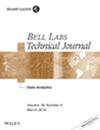智能电网中的需求预测
Q1 Engineering
引用次数: 90
摘要
智能电网中的数据分析可以用来将单个电表的数据流量转化为对电力公司和终端消费者有价值的知识。短期负荷预测(STLF)可以解决对公用事业至关重要的问题,但传统上主要在系统(城市或国家)层面进行。在本案例研究中,我们利用通过计量基础设施收集的丰富、多年和高频注释数据,对中等规模城市的电表总量进行STLF。对于补充了地理特定天气数据的智能仪表集合,我们对几种最先进的预测算法进行了基准测试,包括非线性回归的核心方法、季节和温度调整的自回归模型、指数平滑和状态空间模型。我们展示了STLF精度如何在更大的电表聚合(在馈线、变电站和全系统级别)下提高。我们概述了我们的负载预测算法,并讨论了影响实时STLF的系统性能问题。®2014阿尔卡特朗讯。本文章由计算机程序翻译,如有差异,请以英文原文为准。
Demand forecasting in smart grids
Data analytics in smart grids can be leveraged to channel the data downpour from individual meters into knowledge valuable to electric power utilities and end-consumers. Short-term load forecasting (STLF) can address issues vital to a utility but it has traditionally been done mostly at system (city or country) level. In this case study, we exploit rich, multi-year, and high-frequency annotated data collected via a metering infrastructure to perform STLF on aggregates of power meters in a mid-sized city. For smart meter aggregates complemented with geo-specific weather data, we benchmark several state-of-the-art forecasting algorithms, including kernel methods for nonlinear regression, seasonal and temperature-adjusted auto-regressive models, exponential smoothing and state-space models. We show how STLF accuracy improves at larger meter aggregation (at feeder, substation, and system-wide level). We provide an overview of our algorithms for load prediction and discuss system performance issues that impact real time STLF. ® 2014 Alcatel-Lucent.
求助全文
通过发布文献求助,成功后即可免费获取论文全文。
去求助
来源期刊

Bell Labs Technical Journal
工程技术-电信学
自引率
0.00%
发文量
0
审稿时长
6-12 weeks
期刊介绍:
The Bell Labs Technical Journal (BLTJ) highlights key research and development activities across Alcatel-Lucent — within Bell Labs, within the company’s CTO organizations, and in cross-functional projects and initiatives. It publishes papers and letters by Alcatel-Lucent researchers, scientists, and engineers and co-authors affiliated with universities, government and corporate research labs, and customer companies. Its aim is to promote progress in communications fields worldwide; Bell Labs innovations enable Alcatel-Lucent to deliver leading products, solutions, and services that meet customers’ mission critical needs.
 求助内容:
求助内容: 应助结果提醒方式:
应助结果提醒方式:


